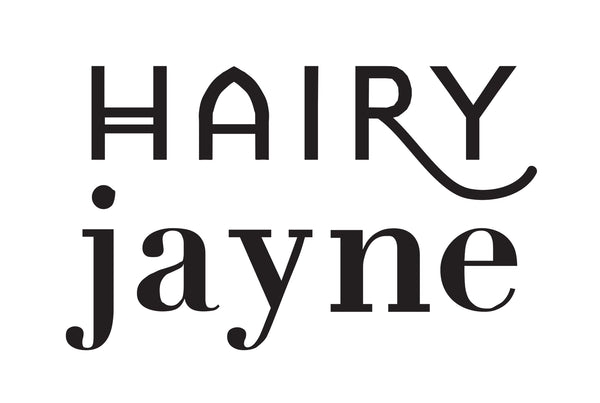
12 different types of hair and how to find yours
There are are many types of hair care products for many types of hair on the market. Which can be confusing! To ensure you're choosing the right hair care products for you, how do you define your head of hair? No two heads are exactly the same, but hair types can mostly be sorted into categories to narrow things down.
12 different types of hair
Generally speaking, there are 12 different types of hair for different types of hair care. There are four categories relating to the texture of hair – straight, wavy, curly and coily hair. And then these can be split further into subcategories related to the 'weight' of the hair – fine, medium and thick (or coarse).

How to define your hair type
Trying to figure out your hair type is not always straight forward. Hair types refer to the hair's natural texture and not to the style or the length of the hair.
No two heads of hair are exactly the same though, as we are all unique. Every head of hair has different hair growth patterns and a variety of textures, sometimes even different hair textures on the same head.
Hair textures usually change over the span of a lifetime, too. The hair you had as a child is probably very different to the hair you have now. So while it’s not easy to define everyone’s hair type exactly, but we can at least narrow it down to one of 12 hair types.
Hair texture categories – straight, wavy, curly and coily
Straight hair – Naturally straight hair strands generally has no kinks in it, which means straight hair is generally shinier than the other 3 types of hair. This is because the natural oil from the scalp can easily travel down the lengths of the strands to keep the whole length of the hair moisturised and healthy.
Wavy hair – has multiple bends in the shape of an S from roots to tips, meaning the kinks are flatter (more 2 dimensional) curly hair.
Curly hair – the strands are more 3 dimensional and are shaped like a spring, which naturally gives the hair more volume than wavy hair. The hair grows out from the follicle in a round pattern, giving a rounder shape.
Coily hair – has a range of more tightly coiled patterns. They range from spring-like to flat zigzag patterns that don't curl at the end. Because of the numerous kinks and angles in coily hair, the natural scalp oils can’t easily keep it moisturised, making the strands more fragile and prone to dryness.

Hair types subcategories – fine, medium, thick/coarse
These 3 subcategories generally relate to the thickness of the actual strands of hair on the head, not the number of strands. The average number of hairs on a person's head is 100,000. A more specific number of hairs can depend on a person’s hair colour – natural blondes have an average of 150,000, brunettes 110,000, black hair 100,000 and redheads around 90,000.
Although natural blondes have a lot more strands of hair, the actual width of each strand is thinner than brunette or red hair, which is why more strands can physically fit on the head.
So technically, blondes usually actually have more hair but their hair is generally defined as fine, red hair is generally thought of as thick or coarse, and black and brown hair is usually medium to thick.
But of course there are always exceptions to these rules! Age can play a part in it, too, as well as genetics so just going by the natural hair colour isn’t fool-proof.
And for coily textures, the ’thickness’ is to do with the shapes of the strands as well, as rounder coils tend to create visually 'finer' hair than z-shaped coils, even though technically both heads of hair may have equally fine strands.
An easy strand test to determine whether your hair is fine, medium or thick is to take one strand between your finger and thumb. If you can barely feel it, you have fine hair. If it feels more like thread, it's probably thick. Somewhere in between would be medium texture hair.

The 12 different types of hair
So, as you can see it can be a little complicated. However, to make things easier just stick with 12 different types of hair. Here is a brief description of each one and any potential problems that they might come with.
Fine Straight Hair: The flattest, thinnest, and silkiest of the hair types. Scalp gets oily easily. Maintaining hairstyles all day can be tricky. Try Dry Shampoo as a styling aid and to minimise oiliness.
Medium Straight Hair: Mostly straight strands, but maybe some bendy ones and a few coarser ones. Greasy roots tend to be the biggest issue, rather than dry ends. Try Shampoo Concentrate to balance greasy roots.
Thick/Coarse Straight Hair: Even though it’s not kinky, getting a comb through it can take a while. Humidity makes it poofy and big. Prone to static frizziness and dry ends.
Maintain moisture levels with Treatment Conditioner as a leave in mask, once a week.
Fine Wavy Hair: Flat waves that are more visible through the ends than at the root. Can be easily be dried straight, tricky to get volume to stay in the hair. Light Conditioner is best for not weighing the fine wavy hair down.
Medium Wavy Hair: A slightly more defined S-shape in the waves. A bit more prone to frizz and poofing, especially if it’s damaged by colouring. To calm frizz and encourage the waves, use Cream Conditioner.
Thick/Coarse Wavy Hair: Mostly S-shaped waves, but with a few loose curls and coarser strands mixed in. Can get frizzy or go fluffy easily and lose definition fast.
Try a couple of drops of Natural Beauty Oil on the ends of damp hair and leave in.
Fine Curly Hair: Mostly loose, delicate curls with a few waves mixed in. Curls can be affected by windy or humid conditions. Blow-dries straight easily, but tends to lose volume. Try Hair Perfume, which works as a very light de-frizzer.
Medium Curly Hair: The curls are usually finger width sizes and are tighter and springier than fine curls. Can be prone to dryness and frizz, depending on the conditions. To combat this, use Cream Conditioner.
Thick/Coarse Curly Hair: Tighter pencil-width curls that are packed together, creating a lot of volume. Prone to dryness and breakage, benefits from moisture and protein boosts. Use Treatment Conditioner as a regular conditioner.
Fine Coily Hair: Small coils in an S pattern about the width of a knitting needle. They can be wiry, can lose definition easily and lose moisture fast. Try a Conditioner Bar, the mango butter helps with definition.
Medium Coily Hair: Bends sharply in a thin zigzag shape rather than coil around like a spring. More prone to shrinkage than fine coily hair, so it appears shorter than it actually is. To regularly maintain the natural hair and scalp oil use Pre-shampoo Treatment Oil.
Thick/Coarse Coily Hair: A really tight Z-shape pattern, the strands are densely packed which means a lot of volume without much definition. Very delicate and prone to breakage because of the number of kinks along the strands. For a regular conditioner use Treatment Conditioner, as well as a weekly leave in treatment mask.


Hopefully this has helped you pin-point which of the different types of hair is closest to yours! And the best types of hair care product for it.
